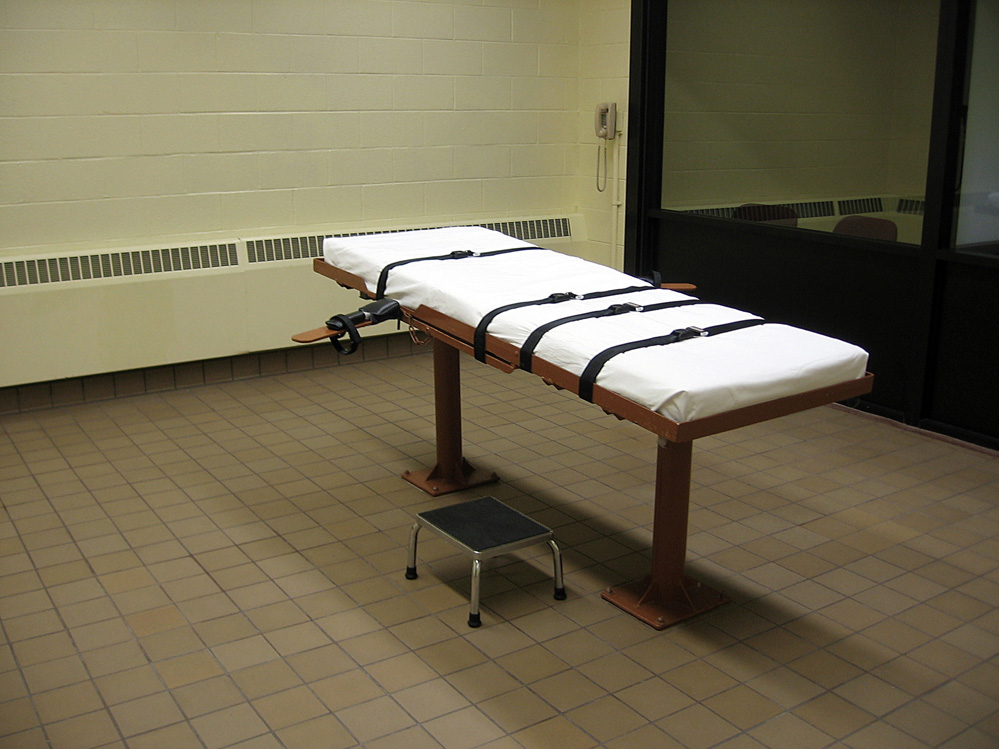The life of Abdul Hamin Awkal has been punctuated by violence. And on June 6, unless the Governor of Ohio steps in, his life will end in the violence of execution.
Born in Beirut in 1959, he grew up in a family with an abusive father and a history of mental illness. In 1975, when he was a teenager, the Lebanese civil war broke out, unleashing waves of violence. There followed 8 years of witnessing dismembered bodies, bombings and kidnappings.
The clemency report tells the story. After 5 years, his parents abandoned him (partly because “something is wrong with him”) and came to America; he fended for himself for 3 more years. Then in 1983 he too found his way to the USA where he spent 4 months sitting shell-shocked on his parents’ couch in Detroit.
He was roused into getting a job, but in 1985 when he was wrongly accused of stealing he freaked out violently, cursing, breaking things and vomiting. He was carried to the hospital in a straightjacket. But he refused to accept treatment.
He got married, and in 1990 had a daughter. But his struggle with depression and mental instability continued. He went to counseling sessions, but he wouldn’t take suggested medication. By 1991, there were divorce proceedings, and a custody battle. In 1992, Abdul Hamin Awkal shot and killed his estranged wife and her brother.
He was arrested and charged with capital murder. He pled insanity, saying that what he saw at the time of the murders were the walls collapsing and his brother-in-law turning into a monster. He was ruled incompetent to stand trial. But he was medicated over and over until he became competent.
His lawyers brought in three experts to support his claim of insanity, a trio that 4 federal judges would later compare to the Three Stooges. One was not licensed, one was not certified in psychiatry, and the third, bizarrely, testified that Abdul Hamin Awkal was sane at the time of the crime. Why did the defense call a witness they knew would totally undermine their client’s case?
Abdul Hamin Awkal was convicted and sentenced to die. His mental health deteriorated further. He was repeatedly diagnosed with schizoaffective disorder, a combination of psychosis and mood-disorder that featured “grandiose and persecutorial delusions.” He saw visions and heard the voice of his dead wife telling him to come join her.
New lawyers petitioned for a new trial because his trial lawyers had been inadequate. In 2000 a panel of the US Court of Appeals for the Sixth Circuit ordered a new trial, deriding the psychiatric experts the defense had relied on. But later the full court would reverse that, over a bitter dissent from 4 of the judges.
In between these rulings came 9-11, and the violence from which Abdul Hamin Awkal had fled came to America. He started writing letters to top U.S. officials. The CIA communicated back to him, he believed, via coded messages in USA Today. He offered his help with the wars in Iraq and Afghanistan and took credit when his suggestions were followed, expressing his belief that the fate of the world was in his hands. But he also believed he was making enemies. The CIA wanted him dead because he had decided to stop helping them.
He wasn’t sure he didn’t want to be dead. In 2007, he had tried to send himself to the execution chamber by giving up his appeals, but he was ruled mentally incompetent to make that decision.
But the appeals have now run out. There was a petition for clemency. The victims’ family, still distraught after 20 years, called for his death. The Ohio Adult Parole Authority acknowledged his mental illness, but they, too, called for his death. His clemency petition was denied 8-1.
Is he competent enough to be executed, even though he still asserts that it is the CIA that is orchestrating his death, and even though he was once ruled incompetent to stand trial and to discontinue his appeals? He faces execution on June 6. One final act of violence, this time courtesy of the state and the people of Ohio. Unless the Governor intervenes.
